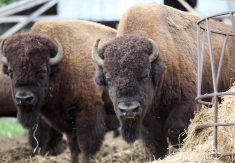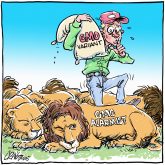The art of filling white space
It’s hard sometimes to find a little peace and quiet. And when an advertiser tried to deliver it recently in a radio ad, all heck broke loose.
As reported in the spring/summer Media Matters newsletter, an appliance manufacturer developed a broadcast ad that used 17 seconds of dead air at the start. The purpose was to demonstrate the quiet operation of a dishwasher.
The silence flummoxed many radio stations, some of which interpreted it as a transmission problem. Alarms sounded.
Read Also

High prices see cow-calf producers rushing to incorporate
Farm accountants are reporting a steady stream of cow-calf producers rushing to get their operations incorporated ahead of selling their calves this fall.
One station, thinking the ad was finished, played a second commercial on top of the first.
“The ads have since been rewritten and the silences shortened considerably,” Media Matters reported. Seventeen seconds is an eternity on radio.
The newspaper equivalent of silent airtime is white space. We don’t have much of that at The Western Producer, and we like to think the white space we do have is used to aesthetic advantage. Notice how your eye races to the spot below:
A young reader once asked how we manage each week to have exactly the right amount of news to fill every page right to the end.
The answer, of course, is that the number of weekly pages is determined by the amount of advertising sold and the budget allocated to that issue. There’s invariably more than enough news and photographs of some description to fill the approximately 33 pages of space available for news in an 80-page Western Producer.
If that weren’t the case, the result would be white space – a little peace and quiet for the reading eye, of course, but neither informative nor entertaining.
This missive on time and space is apropos of introducing two new staffers.
Kurt Hofmann is the new graphics editor, who replaces Michelle Houlden while she’s on maternity leave.
He fills some of our finite space with charts, graphs and illustrations.
Paul Yanko is the new website editor. He is assigned the task of filling some of the worldwide web’s infinite space by updating www.producer.com with news, photos, columns and all the other stuff that’s in the Producer each week.















